Clair Obscur: Expedition 33 has hit the gaming world by storm. This fantastical turn-based RPG racked up critical acclaim on its way to being one of the most highly-rated turn-based games in recent years. First impressions suggest an impressive graphical effort too, packing great art and ray tracing… but with the often heavy Unreal Engine 5 at its core, exactly how well does Expedition 33 stick the landing on current-gen consoles?
Expedition 33 is often very beautiful. It does a particularly great job of presenting new and interesting environments for the player to explore. Some of these are more conventional: the game opens in a crowded 19th-century city, for instance. But the game trends towards more and more fantastical locales as it progresses, including coralline environments that are underwater in every sense but literally, and crimson forests populated by mechanical wooden dolls. Each area is visually distinct, with key visual signatures that keep it memorable.
Key to Expedition 33’s environmental rendering is the trifecta of key Unreal Engine 5 rendering features: Lumen, Nanite, and Virtual Shadow Maps. Lumen GI helps to provide a good sense of indirect diffuse lighting, something it generally achieves – despite some variability in quality. Environments are generally captured in sufficient detail and look handsome, but some smaller-scale elements can feel unattached from their environments. Some of these quibbles might have been resolved with the triangle-based hardware Lumen, but here we’re just seeing its SDF
The game’s reflections also get the Lumen treatment, though most of the game’s areas are rough and foliage-covered, and therefore don’t receive much of a boost from the technique. On smooth surfaces though, you can kind of make out the blobby SDF geometry representations. Generally the game keeps its reflections a little more diffused, so these limitations aren’t very noticeable.
Nanite is also used here, which means that the game doesn’t really suffer from LOD pop-in at all, while mesh quality is also generally quite high. With Nanite comes Virtual Shadow Maps (VSMs), which effectively provide depth and direct-lighting occlusion. The game is naturally lit in most areas, so you don’t see too many non-shadow casting exceptions in the world. VSMs also appear to use Unreal’s shadow map RT technique to correctly diffuse shadows as they fall away from the casting object, at least in the PS5 Pro quality mode as we’re seeing here. Curiously though, some areas don’t seem to use the technique, so shadows tend to look a bit oversharp in those cases.
Expedition 33 is perhaps at its best when you are poring over its dense playable areas, but this game also features a lot of cutscenes. These mostly are quite effective from a technical perspective, with a high-quality depth of field is used liberally for instance, well modelled and rendered MetaHuman-based characters and striking cinematic direction. Facial animation is a little less polished, with lip sync that is often pretty spotty, but as a lower-budget game, Clair Obscur still punches above its weight. Sadly, pre-rendered cutscenes, including a couple in the first hour, are poor-quality FMVs with obvious macroblocking, which undermines some pivotal scenes. The game comes in under 50GB, so it feels like better video quality could have been a justifiable use of some extra storage space.
The game’s battle sequences are another visual highlight. The attack animations are excellent and coincide with fiery particle effects and bold camera moves, and menus are slickly designed. I think this is the most visually engaging turn-based combat I’ve ever seen. There are a few elements here that feel very Persona-inspired, but the execution is so good that it’s hard to find any faults.
Overall, I think Expedition 33 is a very good-looking Unreal Engine 5 title, and it’s one of the most graphically pleasing current-gen RPGs. Despite a few minor quibbles, it’s delivering a top-notch aesthetic experience that looks consistently high quality when exploring or engaging in fights. That’s a particular accomplishment for a game reportedly developed by a core development team of around 30 people over five years, plus a small external gameplay animation team and localisers, QA and session musicians. This game has visual quality in a lot of areas that rivals modern AAA games, but was developed under more serious resource constraints. I doubt that would have been possible on any other commercially available engine except for UE5, which solves many current-gen rendering problems out of the box.
When it comes to consoles, the premiere platform is unsurprisingly PS5 Pro, which offers a 30fps quality mode and 60fps performance mode. The primary difference between the two modes on PS5 Pro comes down to lighting, with less accurate indirect diffuse lighting quality in the 60fps-targeting mode. Reflections take a slight clarity hit too, but the bigger impact comes down to a lowered roughness cutoff, as Lumen reflections don’t appear on rougher materials like this raised metallic design. VSMs also don’t feature shadow map RT, a decision that does lead to a conspicious difference even outside of head-to-head comparisons. I’m sure there are other settings tweaks, but the lighting changes are the most obvious.
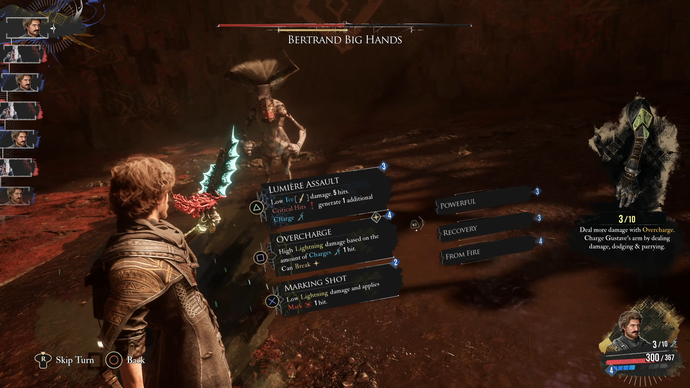
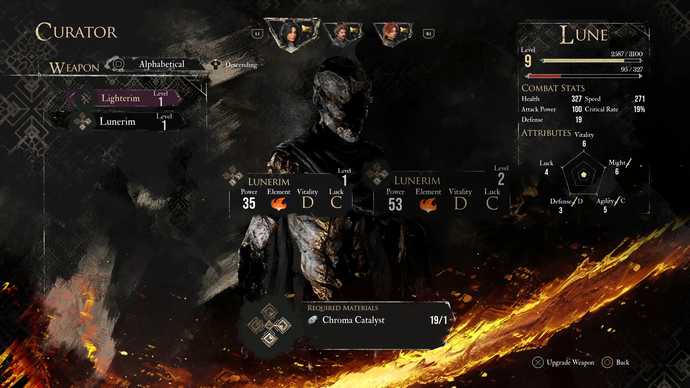
There are also some image quality differences. Expedition 33 doesn’t have amazing image quality on consoles and seems to be using an analytical upscaling technique such as Epic’s TSR. This features a fair bit of aliasing and shimmer, which is worsened in performance mode. In resolution terms, we’re looking at a dynamic base resolution of ~1080p for performance and ~1440p for quality. Enabling film grain and chromatic aberration also substantially softens the image, which is worth keeping in mind in any mode configuration.
Frame-rates are generally very good. In performance mode, we’re looking at a fairly steady 60fps, occasionally interrupted by single-frame drops – most often associated with certain enemy attacks. Quality mode meanwhile runs at a locked 30fps. Weirdly, cutscenes in both modes run at an unstable 30fps, with a broken frame-rate cap and some genuine performance-related dips, the former of which should at least be fixed. I’d lean towards the 60fps mode here for most players, if only because Expedition 33 relies on very precise timing for parries and dodges. Most turn-based titles would feel perfectly fine at 30, but here I felt my gameplay capacity slips substantially at the lower update rate.
Moving down the ladder, PS5 and Xbox Series X look very similar to PS5 Pro. Both consoles resemble their PS5 Pro counterparts in terms of visual features, but resolutions are lower, eg in one shot PS5 in performance mode counts at 864p, down from 1080p on Pro, while PS5 in quality mode counts at 1224p, down from 1512p on Pro. Frame-rates here are much like the system’s more powerful sibling, which is to say very good. The performance mode again is a good 60fps, with some dips noticeable during intense moments, while the quality mode hugs 30fps reliably.
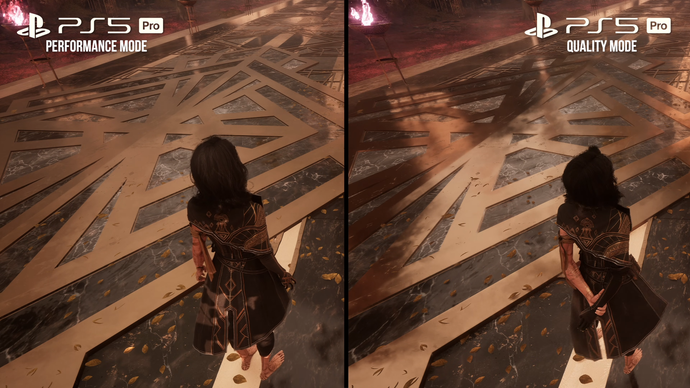
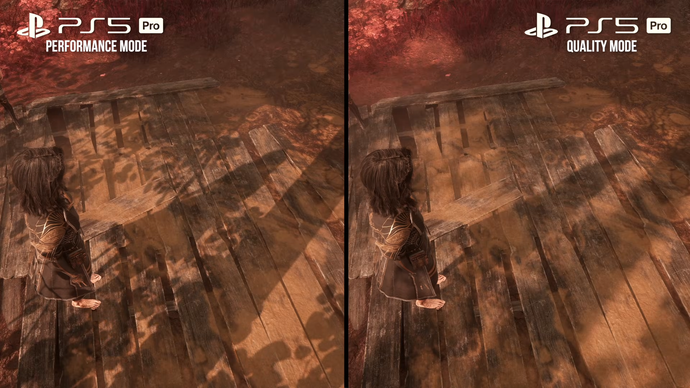
Series S is, as always, the exception, with a visually compromised 30fps mode that trades Lumen reflections for SSR and uses simplified global illumination. Interestingly, the internal resolution is reasonable at ~900p, but actual image quality on display is substantially worse than the Series X performance mode on a 4K display, likely due to lowered upscale target. Performance is locked to 30fps outside of some cutscene wobbles, which is praise-worthy, but I can imagine beating the game on Series S would be substantially more challenging than the other console platforms due to the lack of a 60fps mode.
I’ve enjoyed what I’ve played of Expedition 33, especially for its narrative efficiency and engaging combat system. Visual fireworks certainly help, but the core gameplay is satisfying, blending turn-based weakness and debuff-oriented combat with timing-based action elements. If I had any particular complaint, it’s that it possibly comes on a little too fast for its own good, with complex ability sets introduced quickly and combo systems that differ on a per-character basis. It’s also a bit on the tough side on the default difficulty.
It helps a lot that the game’s stylistic choices remain engaging throughout, with its aforementioned graphical strengths and bold UI playing a big role. It’s scored effectively as well, with over eight hours of music and some memorable themes. Repetition is kept to a minimum here, which is certainly helpful for a game that usually has some kind of musical accompaniment.
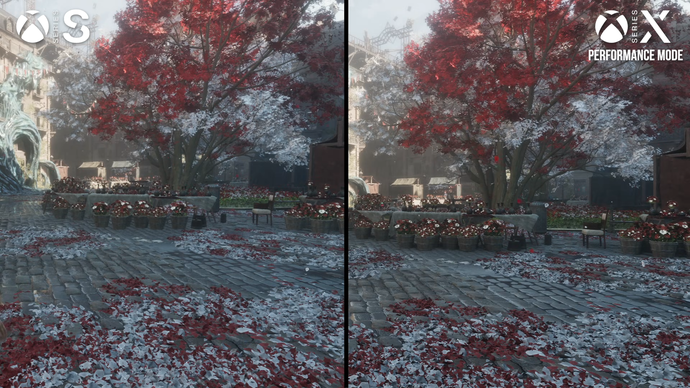
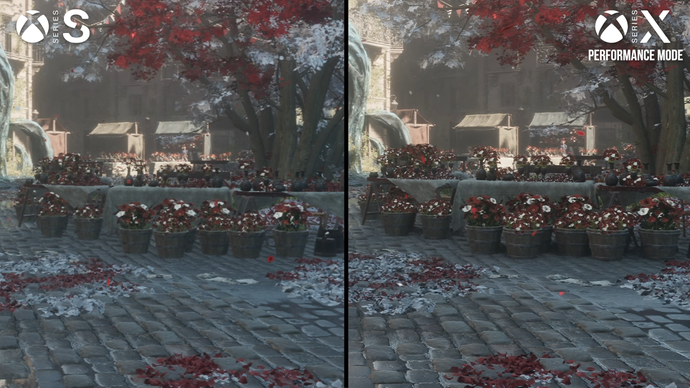
I completely understand why the game has been received so fondly, and why some outlets have pegged it as an early game of the year contender. It’s a confident, beautifully-executed RPG that’s a one-of-a-kind adventure. Visually speaking, Expedition 33 is a great-looking RPG that makes very effective use of the UE5 feature set. There’s no individual element that really stunned me, but at the same time the overall level of quality and polish impresses. Colourful designs and interesting artistic choices make the game especially memorable.
Performance is very good as well. The game services its 30 and 60fps targets effectively, with only rare drops. This is up there with Jusant and Fortnite in terms of delivering a solid 60fps experience with the top-end UE5 featureset on consoles. The Series S release is the only real sore point, with substantially degraded reflections and GI and no 60fps mode. On some level, it’s par for the course for Series S releases, but the downgrades here are a little steeper than with most UE5 games.
Clair Obscur: Expedition 33 is a compelling game on virtually all fronts, and comes highly recommended on PS5, Series X, and PS5 Pro. RPG fans would be well advised to check it out.
